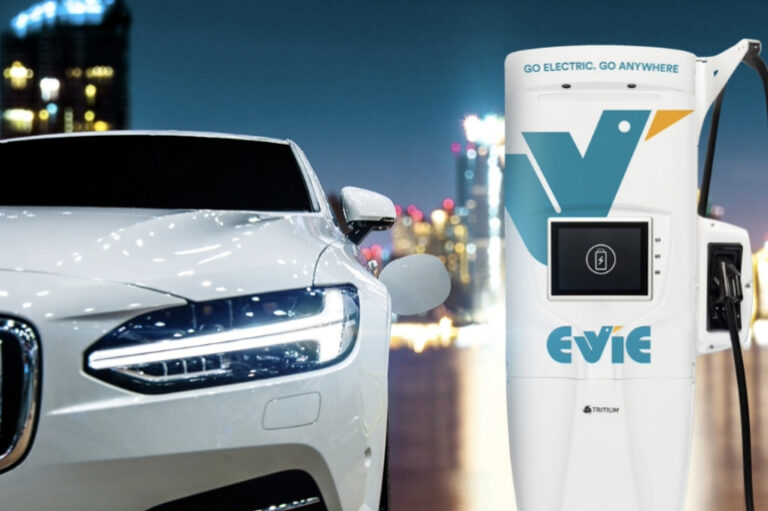For Fleet Managers, one of the more practical hurdles in electric vehicle (EV) adoption is replicating the simplicity and familiarity of traditional fuel card systems.
Evie Networks is now leaning into this challenge with its Evie Charge Card — a product that mirrors the experience of a fuel card, while giving fleets access to Australia’s largest public fast charging network and clear, consolidated data for reporting and cost tracking.
The Charge Card has been available for some time, but as fleet electrification begins to scale up, Evie is now actively promoting it as a key enabler for fleet EV charging.
“We’ve had this in market for a couple of years already,” explained Ben Savigny, Head of Channel Partnership at Evie Networks. “But we haven’t really marketed it. It’s kind of been inbound traffic that’s organically come through our website.” Now, with corporate fleets starting to transition in larger numbers, Evie sees the product as a core growth area.
Offering Flexibility: Card or Fob
One feature that will appeal to Fleet Managers running pool fleets is the choice between a traditional RFID card or a key fob.
Some organisations prefer the fob — which can be linked to the vehicle keys — helping to eliminate the common issue of tracking cards across multiple drivers and vehicles. Others choose to use a card kept in the glove box or wallet. This flexibility allows the solution to be tailored to different fleet structures and operating models.
Built for Fleet Workflows
The Evie Fleet Portal has been developed specifically with Fleet Manager needs in mind.
Key features include:
- Near real-time visibility of all charging transactions
- Monthly consolidated statements
- CSV export for integration with accounting and fleet management systems
- Custom label fields — allowing transactions to be tagged by vehicle, cost centre, or pool car to support accurate reporting
“Fleets still want to understand their total cost of ownership — electricity is one component of that,” said Savigny. The system is designed to ensure that EV charging data can be easily imported into existing reporting processes, even in fleets running mixed vehicle types.
A Network Fit for Fleet Use
One of the reasons Evie now feels confident in promoting the Charge Card out to the wider market is the maturity of its network.
With over 300 fast charging sites nationally, the network now offers a truly viable footprint for fleet operators. Importantly, all Evie sites are fast chargers, enabling drivers to recharge quickly — which is critical for fleets where time equals money.
“We’re in every state and territory in Australia,” said Savigny. “And it’s all fast charging — fleets don’t want to be out charging on AC on company time.”
In many cases, Evie is seeing fleets adopt public charging-only models, particularly for pool vehicles or when home charging is not viable. This is simplifying reimbursement and policy development during the transition period.
Focus on Reliability
Network uptime and reliability remain key factors in fleet purchasing decisions. This is something Evie Networks takes seriously.
Savigny explained that Evie’s network currently maintains an uptime of around 96–97%, with a clear focus on keeping this consistent.
A key point of difference is that Evie owns and operates its entire network. Unlike models where chargers are third-party owned or franchise-operated, Evie’s chargers are fully maintained and supported by Evie’s in-house operations and maintenance team. This gives the company a high level of control over maintenance and service quality.
Fleets can monitor charger availability via Evie’s app and website, with real-time updates provided to drivers on the road.
Supporting the Fleet Transition
One of the strengths of the Evie Charge Card is its ability to fit into real-world fleet operating environments.
During the interview, it became clear that fleet EV policies are still evolving. Different organisations are taking different approaches — some are providing home chargers, some are relying purely on public charging, and others are exploring hybrid models.
Pool fleets in particular are proving a strong fit for public charging via the Evie network, and the Charge Card provides the necessary control and reporting to support this model.
Savigny also noted that the solution is proving straightforward to implement for fleets already familiar with fuel card systems. “It’s the minimum requirement that this product should have out in market for it to be strong,” he said. “We’re seeing customers take it up.”
Summary
The Evie Charge Card offers a practical, fleet-ready solution for public EV charging:
- One card or fob per driver or vehicle
- Fast charging network only — no AC slow chargers
- Nationwide coverage with over 300 sites
- Near real-time visibility and reporting through the Evie Fleet Portal
- Monthly consolidated billing
- Locally owned and operated chargers, with in-house maintenance for maximum reliability
As more Australian fleets begin adding EVs to their operations, products like the Evie Charge Card are helping Fleet Managers simplify the transition — giving drivers an experience that mirrors the convenience of fuel cards, while providing managers with the data and control they need.






